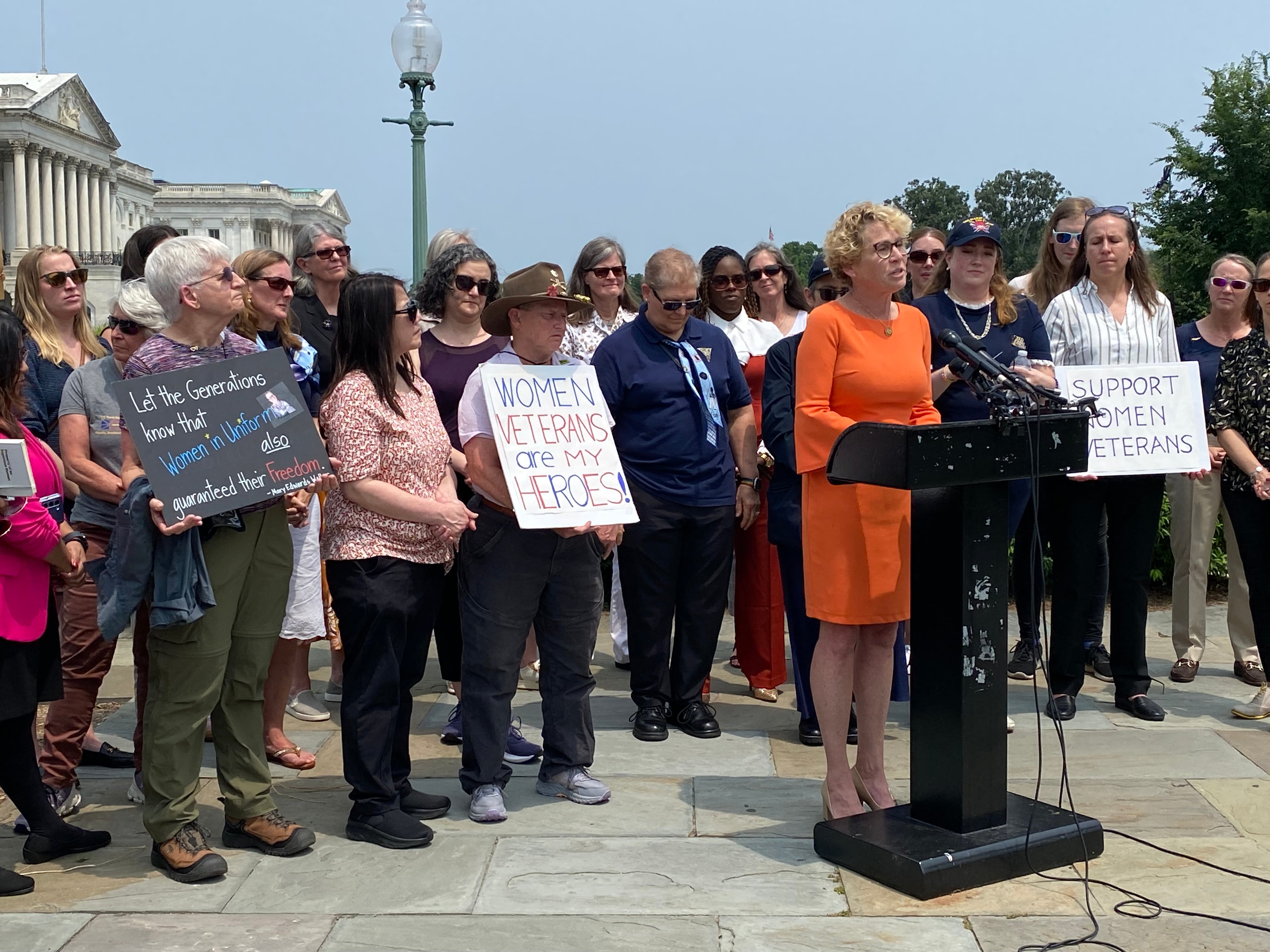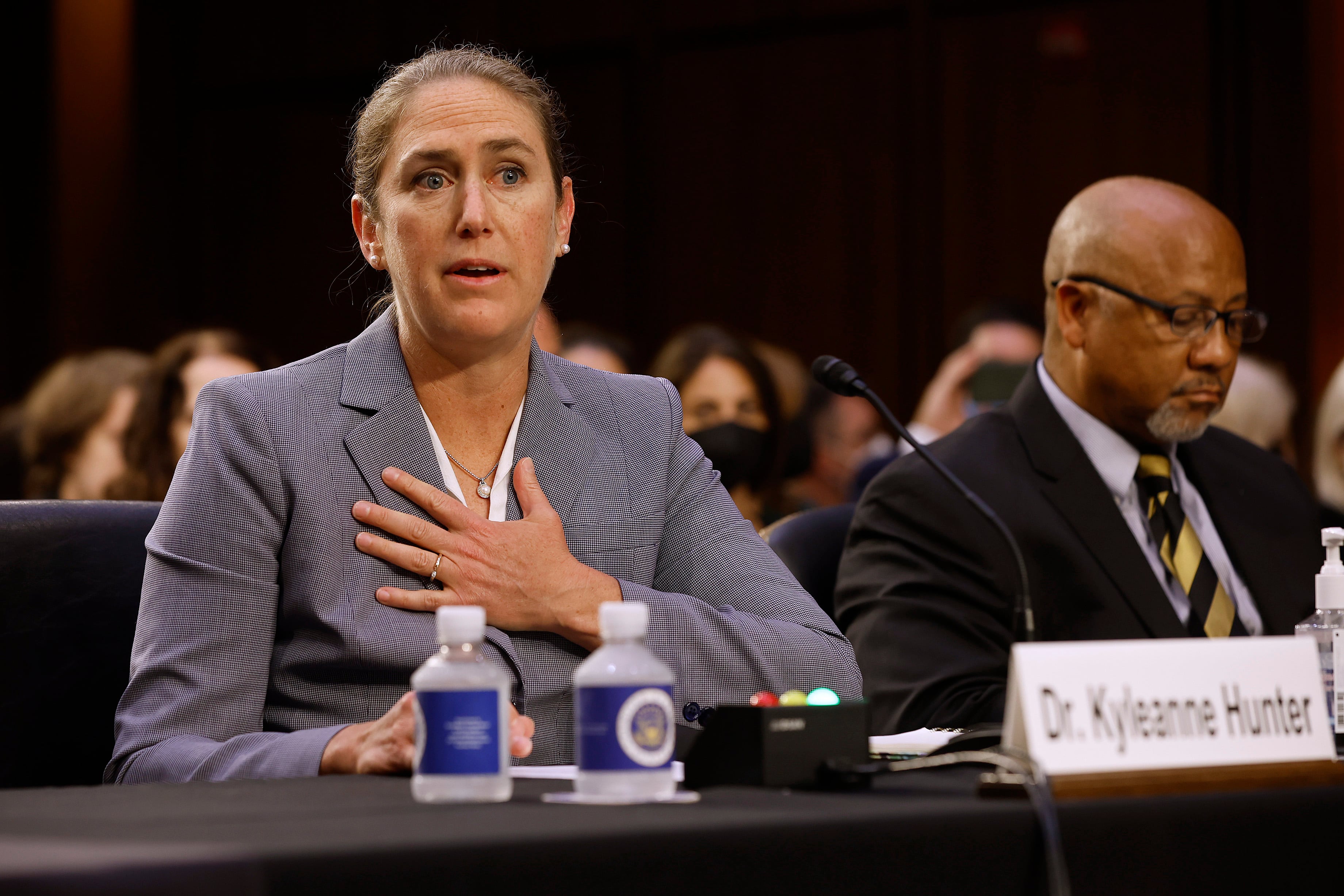WASHINGTON — Lawmakers seem interested in adding to the surface Navy budget in fiscal 2022 and are doing some early number crunching to figure out what that might look like in a fiscally constrained environment.
In a House Armed Services Seapower and Projection Forces Subcommittee hearing, Chairman Rep. Joe Courtney, D-Conn., inquired about the cost of keeping seven cruisers in the fleet: five of which the Navy had already planned to decommission in FY22, and two of which the Navy is newly asking to decommission early instead of finishing their modernization. That’s because the cruiser modernization program is proving more costly and timely than expected.
The Navy has insisted the cruisers need to go to free up money from the ships’ staffing, operations, maintenance and modernization and allow that money to go to current and future ships that are more useful to the fleet.
Though several lawmakers oppose the move to get rid of the large combatants that each carry 122 vertical launching system cells for offensive and defensive missiles, Vice Adm. Jim Kilby, the deputy chief of naval operations for war-fighting requirements and capabilities (OPNAV N9), said there’s more to the equation.
“It’s more than just VLS cells; it’s what is the sensor that the ship brings, what are the capabilities of that combat system, and what’s the confidence and the reliability we have in that hull to get underway,” he said at the June 17 hearing, noting that reliability is the big issue with the aging cruiser fleet today.
“In 2017, I was the strike group commander for the Carol Vinson Strike Group. My air and missile defense command ship was the Lake Champlain; she missed roughly one-third of the deployment because of maintenance things — not because her radar was down, not because her combat system wasn’t capable, not because she didn’t have a full magazine, but she had tank top cracking that required her to get that fixed to be safely underway,” Kilby added. “Vella Gulf missed a month of her previous deployment and has missed two and a half months of her current deployment, [both with the Dwight D. Eisenhower Carrier Strike Group]. So all that, in my mind, has to go into the mix when we factor the availability and reliability of those ships. Those missile tubes will only count if they’re underway alongside the carrier.”

Courtney, already seeing interest among lawmakers in restoring funding for the cruisers and barring the Navy from retiring them — which lawmakers have done for years each time the Navy looks at decommissioning some subset of its cruiser fleet — inquired about the cost.
“If, again, there was a decision made at the appropriations committee or HASC to restore the cruisers that you’re proposing to decommission, that carries a price tag with it. Can you sort of walk us through what that would result in, in terms of having to find offsets in a constrained budget?” he asked.
Kilby replied that retaining the seven cruisers over the five-year Future Years Defense Program would cost the Navy $5 billion; keeping them for two years would cost $2.78 billion. The price tag to finish the partially completed upgrades on two cruisers — Hue City and Anzio — would cost $1.5 billion.
Because the Navy did not include any funding for these ships in its FY22 request, if Congress wanted the Navy to keep the ships, lawmakers would have to find billions of dollars of cuts elsewhere in the budget to make it happen.
Courtney noted that the Navy’s FY22 budget requested to retire the cruisers — which first and foremost perform the role of air defense in a carrier strike group, accompanying an aircraft carrier and monitoring the airspace for incoming threats to the capital ship — as well as to cancel the purchase of a Flight III Arleigh Burke-class destroyer that will take on the air defense role after the cruisers are all retired.
However, the Navy asked for $1.66 billion for the destroyer in its unfunded priorities list, a separate list not vetted by the Pentagon or White House that elaborates on funding needs that didn’t make the final cut in the administration’s official budget request.
“To me, it was noticeable that, on the one hand, restoring the DDG was No. 1 on the list, but there was nothing in that unfunded priorities list regarding restoring the cruisers,” Courtney said.
Kilby said he supports the request for a second destroyer because the capability is needed and would be best for the industrial base. He made clear that retiring the cruisers will be the best fiscal decision and would not create any gaps in deployment capability.
“I’m an Aegis cruiser guy: I’ve done four of my six ships on Aegis cruisers, I love them. But our average age of our cruisers is 32 years. They were built for 30 years. Four of our ships are over 34 years,” Kilby said. “So I’m really trying to look at the most valuable ship that we can fund, the most valuable program within our budget to make our force equal across all functions — air, surface and subsurface — to align to the threats as we see them.”

On the issue of adding the destroyer back into the budget, Courtney lamented twice during the hearing that the Navy had punted a hard shipbuilding decision to Congress. The Navy has multiyear contracts in place with the two DDG builders — General Dynamics Bath Iron Works and Ingalls Shipbuilding — and had planned to buy at least two of the warships in FY22. Instead, the request that came out last month included just one, with funding for the second topping the Navy’s unfunded priorities list. If the administration’s spending plan were enacted into law, the Navy would have to break its contract with one of the two shipbuilders and pay a $33 million penalty.
“Once again, our panel is tasked with making sense of an unexpected cut in steady-rate production of the DDG-51 class destroyer program. I am deeply concerned that sudden course change threatens the stability of the industrial base, undermines confidence in multiyear procurement agreements, and threatens our ability to meet our defense strategy,” Courtney said in his opening statement.
During the FY21 budget process, the Navy similarly cut a planned buy of its Virginia-class attack submarine program from two to one, and then asked Congress for the second boat in its unfunded list.
Courtney noted last year that “we rejected a proposed cut of a Virginia-class submarine and enacted a final shipbuilding budget of $23.2 billion, well above the $19 billion request and actually still above this year’s request from the administration.”
“So just like last year, we have a tough job ahead of us,” he said, suggesting that the sea power panel would find a way to add on to the administration’s request of $22.6 billion in shipbuilding for four warships, four auxiliary ships, and a handful of connectors and other items. “Too many recent budgets have fallen short of these fundamentals only to rely on Congress to fill the gaps. For example, this is the second year in a row, under two different administrations, that the Navy has presented a budget that removes a planned major combatant vessel only to list it as their No. 1 unfunded requirement. That is not a trend any of us here on this committee relishes or wants to see become the new normal.”
Even if the committee isn’t happy about the position it’s been put in, it’s increasingly clear that members want to supplement the administration’s surface Navy plans.
Rep. Elaine Luria, D-Va., a former naval officer and executive officer of a cruiser, expressed her displeasure with the Navy’s long-range shipbuilding plan that was released the evening of June 17, hours after the hearing with Kilby. The document provided strategic vision and ideas for the future fleet, but few numbers beyond FY22.
“If the Navy does not give Congress a plan, we can’t tell where they are going — we have to make assumptions. If we assume that next year’s budget will also fail to enable the force structure that we need, we will be forced to make broad cuts to other programs to fund the force structure that the Navy cannot articulate themselves,” Luria said in a statement to Defense News.
“When the Navy provides ranges of ships needed it is clear that they do not have a strategy that defines actual requirements, otherwise it would be a discrete and defensible number,” she added, referring to the Navy’s plans to field between 321 and 372 manned ships, and between 398 and 512 total manned and unmanned vessels.
On the other side of the Capitol, Senate appropriators — in their hearing on the overall Defense Department budget — signaled displeasure on the matter to Defense Secretary Lloyd Austin. Senate Defense Appropriations Subcommittee Chairman Jon Tester, D-Mont., asked Austin whether the department has an obligation to fulfill multiyear contracts, since Congress must authorize them.
“I have a belief if we’re going to sign a multiyear contract, we ought to live up to it or we shouldn’t sign it in the first place,” Tester said. “The reason I bring this up is the [Defense] Department agreed to a Navy proposal not to fund two Navy guided-missile destroyers. That would break a multiyear contract.”
Austin said the cost of not complying with the contract was smaller than the cost of the DDG itself. “I mean, we have to make choices and, in this case, we invested in a DDG, two submarines and a frigate,” he said, referring to the four warships in the Navy spending plan.

Maine Republican Sen. Susan Collins, whose state is home to General Dynamics Bath Iron Works, argued the destroyer decision a big mistake in a budget otherwise too small to match China. The decision would also hinder plans for a 355-ship Navy and mean fewer destroyers patrolling the Pacific.
In response, Austin agreed to work with the panel, noting the ship is intended to be restored in the 2023 budget. While 355 ships is “a good goal to shoot for,” he said, he is working to field “the right mix of capabilities.”
Size matters, but capabilities also matter,” he said. “We have the dominant naval force on the face of the planet. It has been so in the past, it is so now, it will remain so in the future.”
Still, Collins worried over the effects on the two shipyards, noting that Bath hired 3,000 people since 2018 and has worked to be able to build two ships per year.
“If this budget passes, BIW is rushing toward a workload cliff, which will lead to a loss of jobs, reversing productivity gains and weakening the industrial base,” she said.
Megan Eckstein is the naval warfare reporter at Defense News. She has covered military news since 2009, with a focus on U.S. Navy and Marine Corps operations, acquisition programs and budgets. She has reported from four geographic fleets and is happiest when she’s filing stories from a ship. Megan is a University of Maryland alumna.
Joe Gould was the senior Pentagon reporter for Defense News, covering the intersection of national security policy, politics and the defense industry. He had previously served as Congress reporter.





